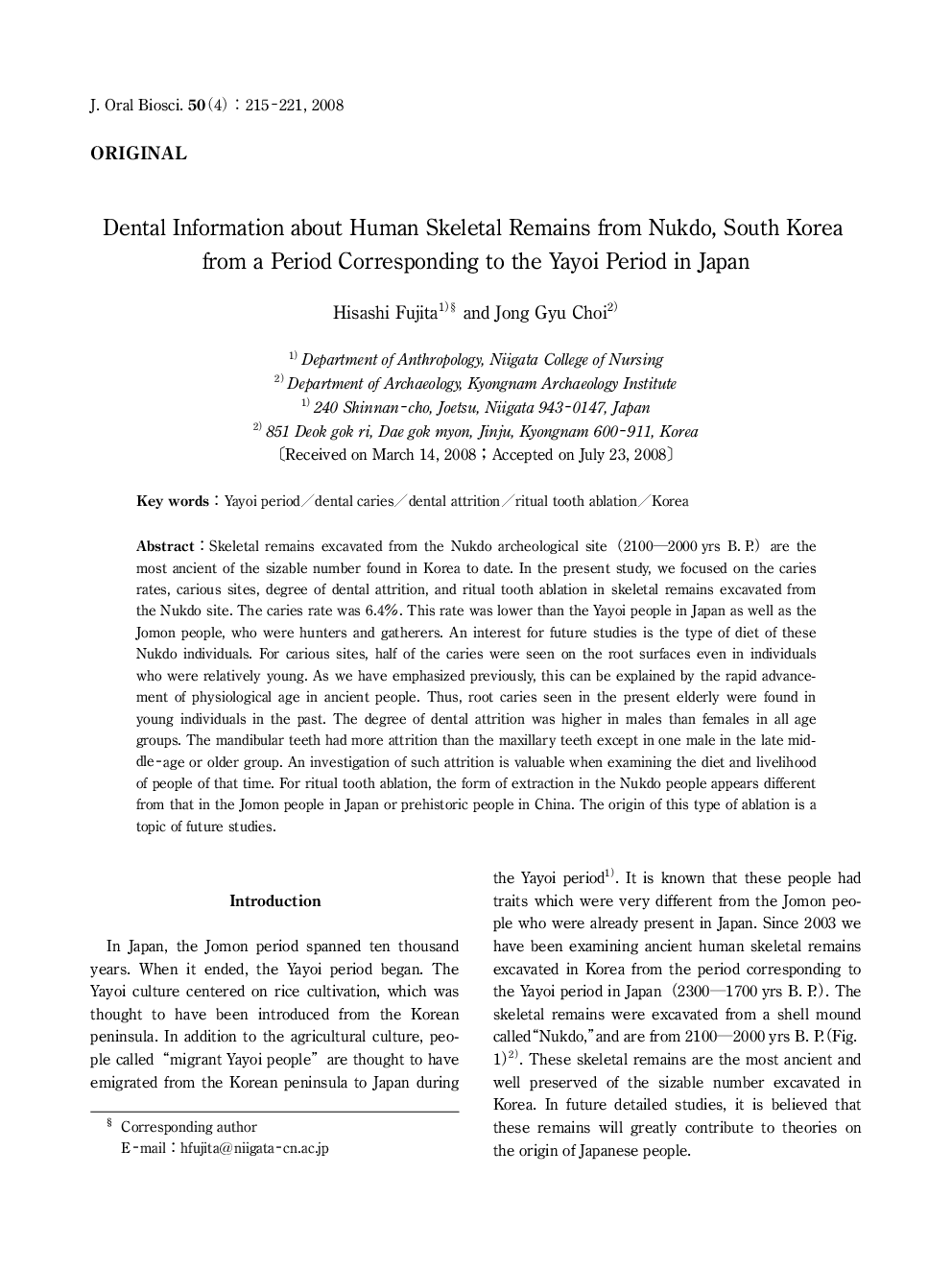| کد مقاله | کد نشریه | سال انتشار | مقاله انگلیسی | نسخه تمام متن |
|---|---|---|---|---|
| 2777028 | 1567958 | 2008 | 7 صفحه PDF | دانلود رایگان |

Skeletal remains excavated from the Nukdo archeological site (2100–2000yrs B. P.) are the most ancient of the sizable number found in Korea to date. In the present study, we focused on the caries rates, carious sites, degree of dental attrition, and ritual tooth ablation in skeletal remains excavated from the Nukdo site. The caries rate was 6.4%. This rate was lower than the Yayoi people in Japan as well as the Jomon people, who were hunters and gatherers. An interest for future studies is the type of diet of these Nukdo individuals. For carious sites, half of the caries were seen on the root surfaces even in individuals who were relatively young. As we have emphasized previously, this can be explained by the rapid advancement of physiological age in ancient people. Thus, root caries seen in the present elderly were found in young individuals in the past. The degree of dental attrition was higher in males than females in all age groups. The mandibular teeth had more attrition than the maxillary teeth except in one male in the late middle-age or older group. An investigation of such attrition is valuable when examining the diet and livelihood of people of that time. For ritual tooth ablation, the form of extraction in the Nukdo people appears different from that in the Jomon people in Japan or prehistoric people in China. The origin of this type of ablation is a topic of future studies.
Journal: Journal of Oral Biosciences - Volume 50, Issue 4, 2008, Pages 215-221